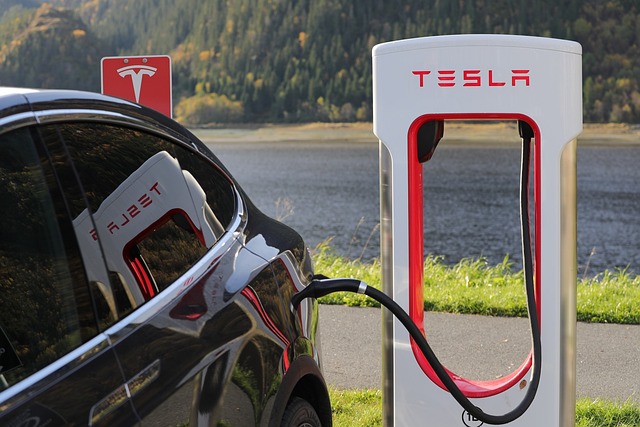Contents
- Identify problems, quantify solutions, and test return on investment
- And the plan? That is the problem sometimes.
- Industrial energy use profiles
- Components of energy
- Monitoring of energy consumption
- Understanding the points of energy waste
- Test your return on investment
- Electromechanical inspection
- Increased productivity or reduced overhead?
Identify problems, quantify solutions, and test return on investment

In the case of energy savings, there are goals and there are plans. Industrial facilities in the US show an ongoing interest in power generation management. That is the intention, to reduce the general energy use or maintain the use, but increase the amount produced per kW used.
And the plan? That is the problem sometimes.
In manufacturing, the plan will only stick if the wisdom of experience to guide the vision and the ROI numbers are present to support the effort. But in energy, there is simply not a body of research available to an industrial plant manager to establish the baselines of what would be a “reasonable” energy use in a manufacturing facility. So how do you assess what portion of current energy use is reasonable and what portion is waste? Or, of that portion wasted, what portion provides a sufficient return on investment to address it?
The return on investment we are talking about here is the cost per kWh, as charged by the public company. The rate for those units varies based on the time of day and time of year. The savings consist of reducing that expense. The materials and labor required to change energy consumption constitute the investment. The return is the period it takes for the reduction of the public company bill to cover the cost of the investment. The benefits are presented once the expenses are covered.
Returning to the matter of the plan, how do you estimate your return on investment if there are no industry standards for reasonable energy use?
Industrial energy use profiles
Industrial energy use varies depending on multiple variables:
. Plant age
. The type and dimensions of cargo
. The operating program, both the hours per week and the intensity of the load
. The number of workers
. The weather
. The maintenance philosophy.
The answer is: don’t try to manage absolutely all the kW your installation consumes. This is where the wisdom of experience comes in. Divide the installation into electrical infrastructure and key systems.
Energy savings start with two basic tactics: (1) general inspection of key systems and (2) targeted data collection, including recording energy use at main service entrances and key loads.
Identify the nominal consumption of a system, determine its current consumption and identify waste practices, both in hours and type of operation, as well as in the equipment and the system itself. To achieve savings, the facility must address waste, whether with changes in operation, maintenance, or equipment and controls.
Components of energy
The mathematical relationship of the real, reactive and apparent power can be represented by vectors, or expressed using complex numbers, S = P + jQ (where “j” is the imaginary unit).
Reactive power does not transfer energy (it does not produce work) so it is represented as the imaginary axis of the vector diagram. Real power moves energy, so it is represented by the real axis.
The rate of energy flow in a system depends on the load; Is it resistive, reactive, or both?
With a purely resistive load, voltage and current reverse polarity at the same time, the product of voltage and current is positive at all times, and only real power is transferred; that is, work is produced.
If the load is purely reactive, the voltage and current are out of phase and the product of voltage and current can be positive or negative, indicating that part of the energy is transferred to the load and another part flows from he came back. The net transfer of energy to the load is zero; that is, no work is produced.
In reality, all loads have a combination of resistance, inductance, and capacitance, creating both real and reactive power in a system. For this reason, electrical systems are designed to tolerate a certain amount of reactive power. Problems appear when too much reactive power is generated. Not only is the actual power insufficient to produce the necessary work, but the overall work-generating capacity of the system is compromised. That is why public companies penalize their customers if their loads produce too much reactive power; it is wasted power that generates monetary costs, but cannot be used. Most utility bills track VAR (reactive power), and many calculate power factor, where the power factor is a rating of how far below 100 percent a system has dropped. Most require their customers to stay above 0.95 PF (power factor).
Monitoring of energy consumption
Understanding the basic energy components allows an electrician to install energy recording equipment to measure the overall level and quality of consumption, and then track when something is consuming energy
Record the wattage at the main and sub panels, and at the important loads. Record kW, kWh, and power factor over a representative period.
This gives a very accurate picture of the actual power consumption in three-phase circuits and loads.
The greatest energy savings are achieved by determining when energy use peaks, evaluating power factor, and total energy consumption compared to utility bills, and possibly the new balance of loads. As little as a couple of minutes of maximum usage can increase your utility rate for a couple of hours, days, or weeks.
Reprogramming loads allows businesses to take advantage of times of day when power is cheapest. Check how far below “1” the power factor is and check the bills to see if there is a penalty for poor power factor. If there is, the energy logger can help you trace the sources. Then, after you have performed the electrical upgrades, reconnect the logger to check the efficiency improvements.
Understanding the points of energy waste
Absolutely all systems and operations have the potential to be a point of waste that can be mitigated or corrected. Sub-electric, compressed air, steam, and some specific electromechanical systems are a good starting point, but each operation has its own potential waste points that should be checked.
The objective is to map the energy use of specific equipment and processes, to detect the points where energy is being wasted, in order to quantify the waste and prioritize improvements or replacements according to the life of the equipment and the improvements that they can provide the best return on investment.
Usual waste in sub-electrical systems:
. Loads that are often left on for hours or running unnecessarily at peak rate times of the day.
. The absence of controls on the engine may imply more production than required.
. Excessive voltage / current conditions cause excessive current draw to compensate.
. The phase imbalance causes the load to consume electricity without being able to use it.
Identify and quantify:
. Thermally scan electrical panel and mechanical load for overheating.
. Record the power as a function of time. How much electricity is consumed, at what time of the day, and at what level of waste?
Usual waste and inspection points in electromechanical systems.
. Excess friction due to misalignment, bearing, imbalance, and backlash causes the motor to overwork and consume too much power.
. Uncontrolled loads left on for hours, running during peak consumer demand hours, generate more output than necessary, or experience excessive voltage / current conditions and phase imbalance.
. Old mechanical devices consume much more electricity than new high-efficiency models, so an early replacement may be justified on the reduced kWh consumption only.
Identify and quantify:
. Perform thermal scan of unit panel and mechanical load for any signs of overheating or electrical inefficiency.
. Record electricity over time – check total kWh, power factor, peak demand, imbalance, and harmonics.
. Test vibration levels in accordance with standards and identify maintenance solutions such as rebalancing.
. Thermally scan couplings / shafts / belts, bearings and fan.
. Check current and voltage levels.
. Thermally scan the junction / junction box and windings, and perform insulation resistance tests.
Usual waste and inspection points in compressed air systems:
. Excessive leaks in compressed air lines cause excessive operation to maintain supply.
. Compressors left on outside of their run time waste energy.
Identify and quantify:
. Record the power at the compressor to obtain reference consumption.
. Measure the pressure at the compressor and point of use to determine the volume of the drop.
. Ultrasound scans lines to identify leaks.
Usual wastes and inspection points in steam systems:
. Failed steam traps and insufficient insulation waste steam and cause overproduction to maintain needed supply.
Identify and quantify:
. Record the power in the boiler to obtain reference consumption.
. Thermally scan pipes and traps to identify insulation gaps and blockages.
Test your return on investment
Given the aforementioned lack of industry standards, how do we actually know which systems have the greatest potential for ROI? Our best material right now is exemplary cases representing common situations. Here are several examples of common industrial systems.
Electromechanical inspection
Facility type: steel recycling plant in Germany.
Equipment type: belt driven fan for process cooling.
Measurements taken: vibration tests.
Detected problems: moderate imbalance, along with misalignment and wear of the bearings.
Savings: it is necessary to correct the imbalance. A 350 kW motor ran at 80 percent of rated power; the measured power was approximately 280 kW. After correcting the imbalance, power consumption was reduced by 3 percent.
Compressed air inspection
Installation type: manufacturing.
Type of equipment: compressed air system.
Action taken: Ultrasonic inspection of a compressed air system (a complete compressor data log was recommended).
Detected problems: the amount of compressed air produced compared to the actual demand.
Savings: Several savings opportunities were found. Total annual savings of $ 50,600. Shut down compressor on weekends: annual savings of $ 32,700. Install solenoids to shut off air passage when machines are off: annual savings of $ 7,100. Repairing 36 leaks: annual savings USD 4800. Filters installed in the system at a one-time cost of USD 6000; Annual savings as a result of filters: USD 6,000.
Steam trap inspection
Installation type: manufacturing
Type of equipment: boilers and steam lines.
Measurements taken: steam line thermal inspection.
Detected problems: six steam lines not working properly; coil leaks in plated tanks; steam leaks in plated lines; opportunities to recover condensate.
Savings: Six failed traps were replaced at a cost of $ 500 per trap. Savings achieved: USD 3,200 per trap using known cost to generate heat and steam loss calculations. Total savings: USD 16,200.
Next Step: Energy Logging on the Boiler Supply Panel Before and After Addressing Leak and Condensate Issues.
Increased productivity or reduced overhead?
The following question is nice to answer: once you identify a route to reduce energy consumption, should you direct those savings towards increasing the profitability of the plant (same kWh consumption with higher volume production) or other business strategies ( profit margins, improved prices obtained)?
Reducing energy consumption is simply good business. By recording the power of each main system and mapping those costs against utility bills where and when consumption occurs, businesses can realize savings through simple operational and program changes. By identifying inefficient or obsolete equipment, companies can justify and prioritize replacements. And by reducing overall energy consumption, companies reduce operating costs, thus improving their competitiveness in the market.














+ There are no comments
Add yours